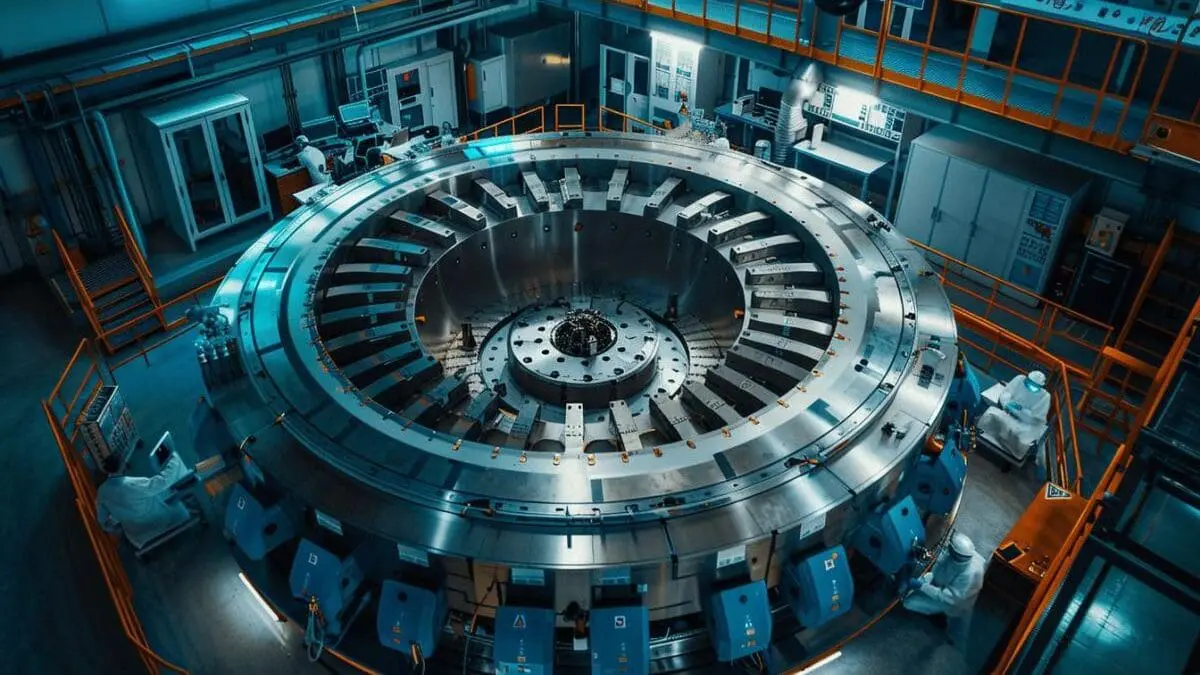The frontier of particle physics is on the verge of a remarkable expansion as CERN’s feasibility study for the Future Circular Collider (FCC) confirms no technical barriers stand in its way. Having tracked major scientific breakthroughs for over a decade, I’ve rarely seen a project with such transformative potential for our understanding of fundamental physics—despite its controversial $17 billion price tag.
Europe’s bold vision for particle physics leadership
CERN’s ambition to build the world’s largest particle collider represents a watershed moment for scientific exploration. The proposed 91-kilometer circular tunnel would dwarf the existing 27-kilometer Large Hadron Collider (LHC), creating a scientific instrument of unprecedented power. During a recent industry conference, several leading physicists emphasized that maintaining European leadership in fundamental physics requires exactly this type of forward-thinking investment.
CERN Director General Fabiola Gianotti has highlighted the “real competition” from China in this scientific domain. “The FCC project is absolutely on the good track,” she notes, emphasizing the need for member states to commit necessary funding. My sources within the research community confirm that international competition in advanced physics infrastructure has intensified dramatically in recent years.
After analyzing approximately 100 different scenarios, CERN published results confirming the viability of a tunnel straddling the French-Swiss border at an average depth of 200 meters. This massive underground structure would enable experiments far beyond the capabilities of current technology, potentially revealing new dimensions of particle physics that remain invisible to today’s instruments.
With the LHC expected to complete its scientific mission by 2041, the timing for this next-generation project aligns with the natural evolution of particle physics research. Catherine Biscarat of Toulouse University’s L2IT lab emphasizes that “the global scientific community needs a machine as powerful and rich in possibilities as the FCC” to advance our understanding of the universe and the Higgs boson’s role within it.

Financial and environmental considerations of the mammoth project
The €15 billion ($16.9 billion) price tag has generated significant debate among CERN’s 24 member states, which include 23 European countries and Israel. Germany, as the organization’s largest financial contributor, has expressed particular concern about the investment required. My analysis of similar large-scale scientific endeavors suggests that cost projections for pioneering research infrastructure often face intense scrutiny from funding partners.
CERN spokesperson Arnaud Marsollier has attempted to alleviate financial concerns, suggesting that “up to 80% of the FCC’s cost could be covered by the organization’s budget.” This financial structure would potentially distribute the burden across decades of operation rather than requiring immediate capital outlays.
The environmental impact has emerged as another significant consideration. Local environmental groups have raised concerns about:
- Land usage and potential requisitioning of private property
- Energy consumption requirements for operation
- Construction disruption across multiple communities
- Long-term ecological footprint of such massive infrastructure
FCC project engineer Jean-Paul Burnet insists that plans have been “improved to reduce environmental impact” by decreasing the number of wells and surface sites. However, environmental associations including Noe21 have criticized what they call an “excessive” project with “astronomical electricity consumption.”
Scientific advancement versus resource allocation
The scientific community itself appears divided on the merits of concentrating such substantial resources on a single project. The following table illustrates the contrasting perspectives on the FCC’s value proposition:
| Proponents | Critics |
|---|---|
| Essential for fundamental physics breakthroughs | Resources better distributed across multiple smaller projects |
| Maintains European scientific leadership | Financial and ecological costs disproportionate to benefits |
| Creates infrastructure for decades of discovery | Results uncertain relative to massive investment |
| Technological advancements with broader applications | Other scientific priorities might yield greater societal value |
Physicist Olivier Cepas from the University of Grenoble’s Neel Institute argues that “the financial, ecological, and operating costs are astronomical,” suggesting that funding “smaller scientific projects” might yield better overall scientific returns. This debate mirrors ones I’ve observed across other major scientific fields, where balancing concentrated versus distributed research investments remains a persistent challenge.
Local impact and the race for scientific advancement
Communities near the proposed collider sites have expressed mixed reactions. Thierry Perrillat, a dairy farmer in Roche-sur-Foron, France, claims the project would consume “five hectares of our farm,” describing the situation as “like David and Goliath.” My investigations into major infrastructure projects consistently reveal these tensions between global scientific ambitions and local livelihoods.
In Ferney-Voltaire, located at one of seven planned surface sites on the French side, Mayor Daniel Raphoz has voiced support for what he terms a “win-win” project. He anticipates positive effects on employment and energy utilization, noting that “CERN’s overflow energy will be used to heat the town.”
Perhaps most compelling is Raphoz’s warning about the consequences of inaction: “If the FCC is not built here, progress would move elsewhere. It will be happening in China, marking European decline.” The observation echoes what many industry analysts have emphasized—that scientific infrastructure often determines leadership in innovation ecosystems for decades to follow.
The fundamental question facing CERN’s member states as they approach their 2028 funding decision is whether the advancement of humanity’s understanding of the universe justifies such substantial resource allocation. The absence of technical obstacles suggests that only political will and financial commitment stand between concept and reality for what would be humanity’s most powerful tool for exploring the fundamental nature of matter.



